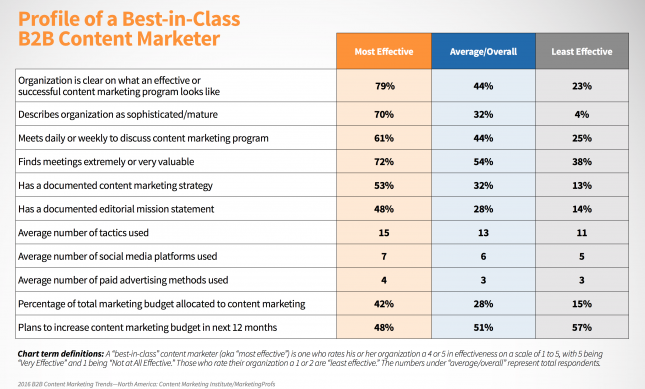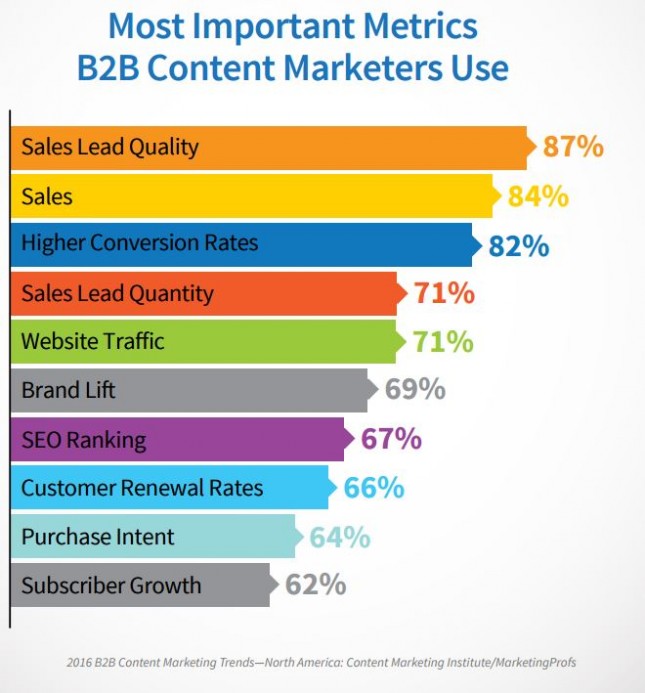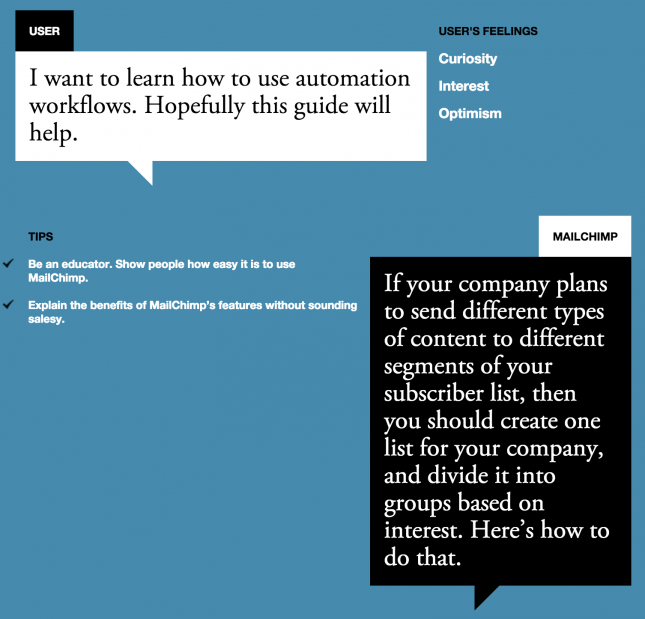The next time you take that beloved crossbow outside and aim for a tree, try closing your eyes before firing. Can you guess where the arrow will land? Nowhere close to the mark. Content marketing without a solid plan has the exact same results. You’ve got everything in hand you need to be wildly successful—the right information, people and delivery mechanisms. Yet when it comes time to execute, your arrow veers right and grazes the neighbor’s cat. You can do so much better! What follows is a strategic planning checklist to keep your content marketing efforts on target.
1. Write out your strategy
Chronologically, this might be the last step in the process of developing your strategic planning checklist. Yet it’s the most important to-do on this list, which is why we’re putting it first. We know intuitively that a written list acts like an accountability partner that we can consult time and again to ensure we’re on the right track. Experts in psychology agree that written or public goals get accomplished more often. In the world of content marketing, these same maxims are proved annually by the CMI/Marketing Profs Content B2B Marketing Trends Report. In the 2016 edition, for example, the most effective content marketers were almost twice as likely to have a documented strategy or a written editorial mission statement. A few other habits of effective content marketers:

2. Update your personas
Review how you’re defining your target audience by evaluating personas—those fictitious descriptions that aim to encapsulate who your content needs to reach. Are you interviewing actual customers to validate personas? Are you considering all the data? Research on buyer personas by Cintell suggests that marketers with documented and updated buyer personas are more than twice as likely to exceed their goals.
3. Take a deep dive into what’s working
Admittedly, different strategies have different KPIs. But beyond crunching the numbers about how others are consuming your content (or not), you need to know what’s working in each channel to develop your strategic planning checklist. On the tactical side, ask yourself what you hope content will achieve. More educated customers? More sales? Higher lead-generation? Then address specific content-delivery platforms, whether newsletters, social media or infographics to develop the prescriptions you’ll use to improve each area. Bottom like, it’s hard to decide to do more or less of a given activity if you don’t know what’s working.

4. Look at the competition
Analyze what your competition is doing with content marketing. What about their strategy is resonating (either because there’s lots of sharing or you see them doing a lot of it)? What topics are they focused on or ignoring? What areas do you think you could own? Do a basic SWOT analysis, then use tools such as Buzzsumo and Moz to validate your qualitative research.
5. Get a cross-functional check-up
Content managers can’t operate in a vacuum. Obtaining buy-in across the departments of your business is crucial to moving the content needle. Check in with sales, customer success, and the product team to verify: a) the audience you’re building is helping them reach their goals and b) the content you’re creating is useful to other teams. To streamline the feedback process, consider a two-part approach. Schedule sit-downs with people in key departments and ask open-ended interview questions that help you gauge what’s working and what isn’t. Also solicit their ideas for new content and improvements to make. Then send a quick electronic survey to capture feedback from those who weren’t able to participate. As an added benefit, you might even identify some enthusiastic content creators.
6. Identify opportunities to scale
Based on all of the action items we’ve described above, you should begin to see patterns emerge that point you toward the elements to include in your strategic planning checklist. But don’t overlook the content you’ve already created. How might existing marketing assets—or interesting content from other departments—be reused as evergreen content, for example? Remember, your objective is to work smarter, not harder. It’s not cheating if some of the tactics that emerge get you closer to the mark while saving you time and recapitalizing on successful campaigns.
7. Set measurable (and realistic!) goals
Unless you are the content marketing world’s foremost rainmaker, chances are your budget and staff resources are limited. That means your content expectations have to be realistic, and they might need to be adjusted to be obtainable. Setting good goals is a little bit of an art form. Should they be based on past performance? Or should a bar be set that you just find a way to leap over? However it gets done, make sure that your goals are based somehow in reality. If, for example, you plan to see traffic grow at 10% a month, you should be able to point to activities you’ll be doing each month to drive that growth. You should also know you’ll have all the resources you need to get there. If your resources and your goals aren’t aligned, your strategy’s not going to work.
8. Check your voice and tone
Ann Handley said it best recently when she wrote, “If your logo fell off, would you recognize you?” She’s right, of course. Your written content should be distinct, and it should reflect your core personality—how you envision your business would talk to customers if it had a mouth. Does your voice capture the essence of your brand? And does it, like, bring your audience a little closer, man? I missed the mark on that last sentence, didn’t I? Take a real look at how you say what you say. In addition to Ann Handley’s existential question above, put yourself in the shoes of your personas and ask whether your content is appealing. Better yet, ask a few customers what they think. If you want a role model for developing the right tone (and getting it adopted across your org, look no further than MailChimp’s brilliant guide. An example:

9. Share your plans with your team
Once your strategy is written, your budget is in place and your team is at the ready, it’s go time. Gather the troops and walk them through the document you’ve created. Nothing that’s in it should be a surprise; chances are good they helped you build it. Now, go forth and plan! Document, research and measure! It’ll be an awesome year if you do. Nate Birt is a multimedia journalist, social media enthusiast and copy editor with experience at a variety of print and digital publications, and a Contributing Editor to the Visually Blog. Follow him on Twitter at @natebirt.







